Want to attract and engage your ideal buyers?
Then, you need to build a strong presence online and engage your audience through the channels they frequent.
Don’t worry. I’ll help you improve your digital presence – including your brand’s online visibility, credibility, and reputation.
How? By helping you optimize:
- The actions you take and the online interactions you make
- The content you create and publish online
- Where you stand in the search results and social media feeds of your ideal buyers
- How consumers perceive and talk about your business
You’ll also discover the tips and tools that can help you along the way. So, let’s start.
Why Do You Need a Strong Online Presence for Your Business?
You need to build a strong online presence because that’s where your consumers are.
The number of digital buyers has increased by 40% in the past five years. By 2024, global ecommerce sales will likely surpass $7 trillion in value as well.
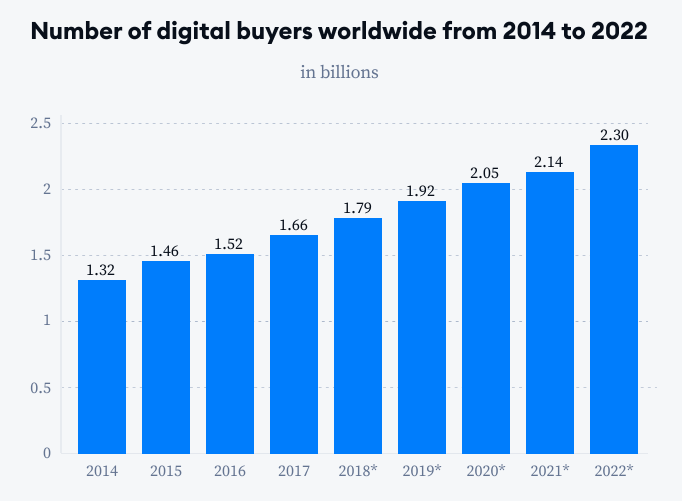
Even shoppers who purchase through brick-and-mortar stores often research products online.
So, improving your digital presence can help you:
- Get discovered by a wider audience.
- Market your business 24/7 and increase awareness about your products and services.
- Earn Google’s trust by optimizing your content for search engine algorithms.
- Improve customer engagement by using multiple channels such as email, social media, and the web.
- Establish your brand as an authority in your industry.
- Leverage data to learn which marketing strategies, content pieces, and channels are driving results for your brand.
- Build trust with your customers.
- Drive more traffic to your website.
- Increase sales.
How to Improve Your Online Presence: A Step-by-Step Guide
With a stronger online presence, you can attract more customers, sales, and revenue. Just follow the steps below to expand yours.
1. Assess Your Current Digital Presence
Before improving anything, it’s important to assess your current positioning. This is true for your brand’s online presence as well.
To start:
Analyze Your Website and Content
Your website is often the first point of contact between your business and potential customers. Make sure it is well-designed, easy to navigate, and contains all the information your customers need.
Just in case, you haven’t created one yet, build your business website now.
For those who already have a website, perform a thorough audit to analyze:
- Is it secure?
- Is it responsive?
- Does it allow users to navigate easily?
- Does it include all the information your buyers need?
- Are all visuals attractive and of high quality?
- Does it load fast?
- What about your website’s SEO health?
You can use Semrush’s Site Audit tool to identify technical issues on your website and fix them.
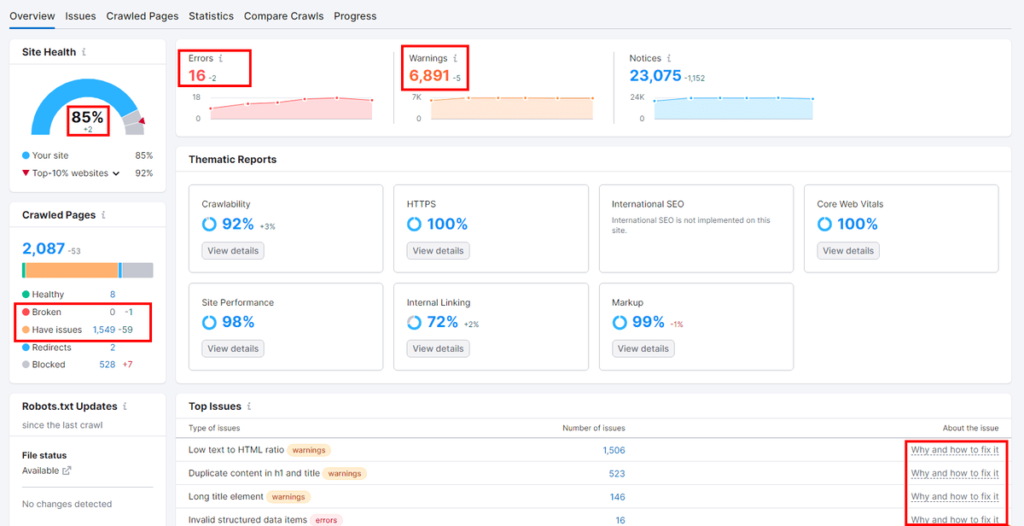
It also helps you identify issues related to your content such as duplicate content or less text as compared to other pages on similar topics.
You can also use Google’s PageSpeed Insights tool to analyze the page loading time of your website. It will also suggest speed improvement measures.
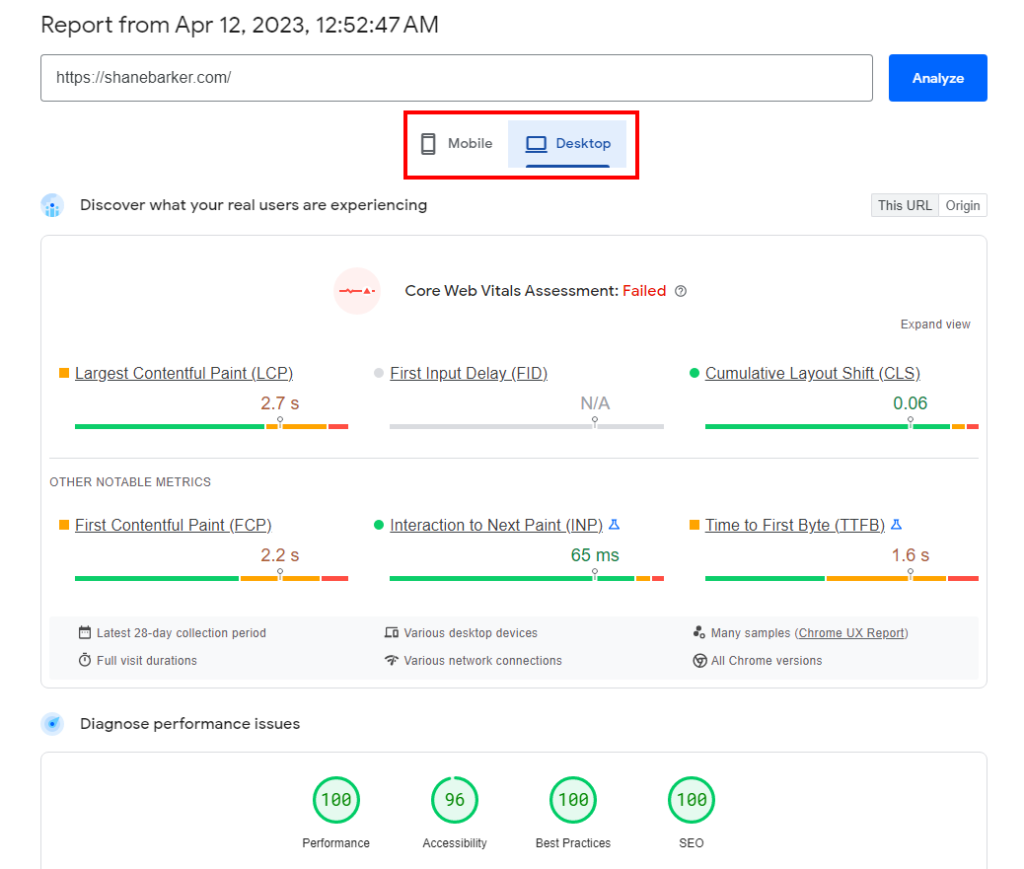
Analyze Your Social Media Accounts
Next, analyze your profiles on different social media platforms and ensure that your information is consistent across platforms.
Leverage social media analytics to figure out:
- How are people interacting with your content?
- What’s the sentiment around your brand conversations?
- How many brand mentions do you get each month?
- Which type of content generates maximum engagement?
- What’s your share of voice in your industry?
- When is your audience most active on each social platform?
You can use social media monitoring tools like Brand24, Buffer, and Sprout Social to track key metrics like your social reach, engagement, top-performing posts, and brand mentions.
Monitor Your Online Reputation
You should monitor how and what people and publications say about your business, not just on social media but online (in general).
Setting up Google Alerts for your business name, your name, and your popular products can be a good way to start monitoring your online reputation. You’ll get alerts every time you’re mentioned on any website, directly in your inbox.
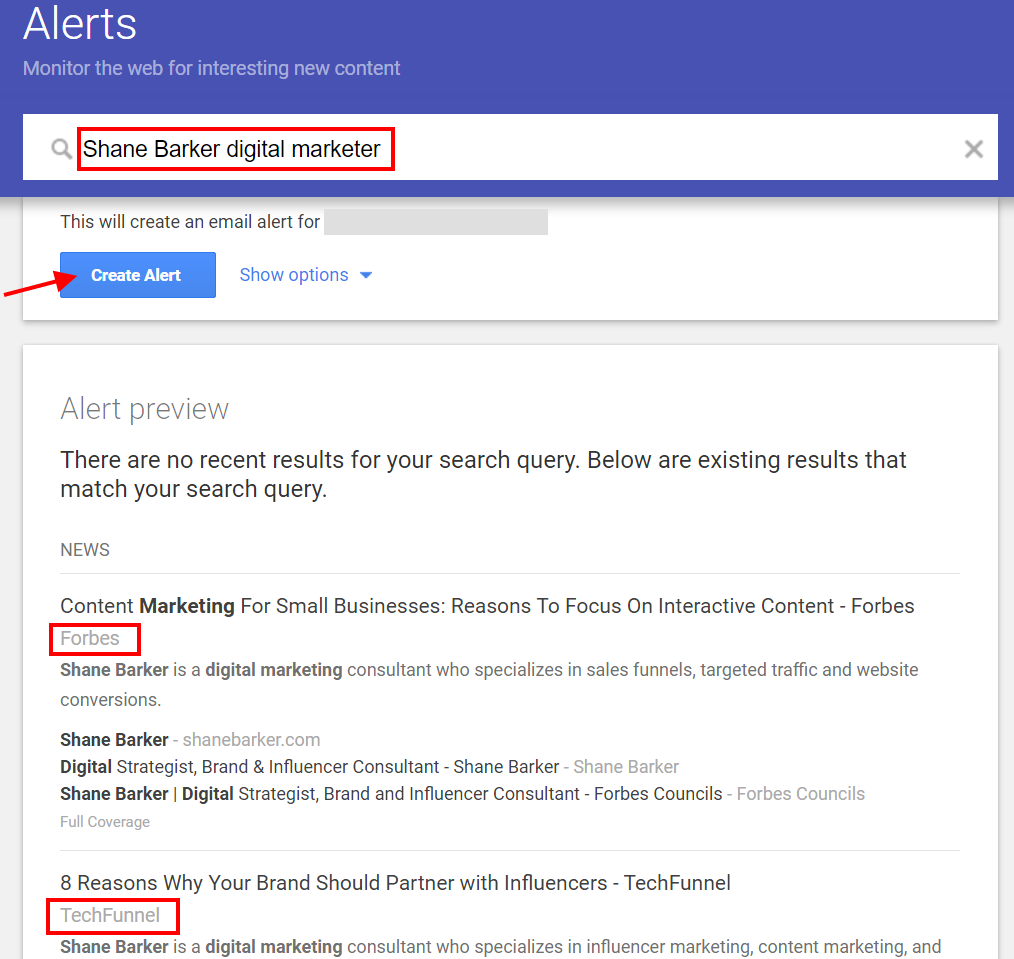
2. Develop a Strategy to Improve Your Brand Recognition
Brand recognition plays a significant role in building trust and credibility with your target audience. To make your brand more recognizable to potential customers, you need a clear and effective strategy.
Set Your Goals Right
Get the basics right. Ensure that you have a memorable business name and logo. Clearly define what your brand stands for and how you want people to perceive your brand.
Next, set specific goals that you can track and measure. For example:
- I want to grow my monthly website traffic to 100K in six months.
- I want to establish my authority in the SEO niche by contributing to publications like Semrush, Moz, and Backlinko by the end of this year.
- I want to generate 50 leads in the next three months for my SEO services.
Identify Your Target Audience
Who do you want to reach online? Your answer to this question will guide all of your marketing and brand-building efforts.
So, think carefully about:
- Who are your ideal buyers?
- What age group do they belong to?
- Which regions do they come from?
- Home much do they earn annually?
- What are their pain points or the key challenges they face?
- Who do they follow, interact with, and trust online?
- What type of content do they prefer to consume?
- How do they interact with brands similar to yours?
- Who is not your audience?
You can find your target audience using advanced data tracking. Understanding your audience and what they care about will help you create content that resonates with them and helps improve brand recognition.
Create a Content Strategy
You should create and share content regularly to reach your target audience and stay on the top of their minds.
Earlier in the post, I asked you to conduct a content audit. It must have helped you:
- Take account of the content you already have.
- Assess the effectiveness of your current content in improving brand recognition.
- Identify any gaps or opportunities for improvement.
Based on your existing content and your goals and audience insights, you should create a plan that includes:
- The types of content you will create
- The topics you will cover
- The channels you will use to distribute your content
- The existing content pieces you will update with the latest information, statistics, and examples
- The frequency of publishing your blog posts, infographics, guest posts, and other content
Establish a Consistent Tone of Voice for Your Brand
Make sure your content sounds the same across platforms. For this, it’s essential to define your brand’s voice, values, and messaging.
You should:
- Decide how you want to represent your brand. Should it sound fun, inspiring, playful, or authoritative?
- Define your brand’s core values. Are you someone who vouches for sustainability or women's empowerment?
- Develop a tone of voice that resonates with your target audience. Learn about their interests.
- Create a style guide that outlines the key elements of your brand’s tone of voice. It could include elements such as your take on using humor, the words and phrases you want to use, those you want to avoid, etc.
- Also, finalize 2-3 fonts and colors that you want to use for your branded text and visuals.
3. Improve Your Website’s Search Performance and User Experience
Your website is an essential part of your online presence. Ensuring that it is optimized for search results pages and user experience will help you attract and retain more visitors (your potential customers).
Ensure That Your Website Has an Attractive Design and Layout
The look and feel of your website mark the first impression of your brand in the minds of your potential customers. So, it has to be attractive and engaging.
Here are a few tips that can help you improve your website’s design:
- Choose from a pre-designed simple yet attractive theme.
- Keep enough negative space to let your web design elements breathe.
- Avoid basic web design mistakes that can harm your SEO.
- Improve page loading speed.
- Build a seamless checkout experience for your ecommerce website.
- Use colors that stand out for your call-to-action buttons.
Optimize Your Website for Search Engines
75% of people will never go beyond the first page of Google when researching information or products. The best way to ensure that your target audience finds your website is by optimizing it for relevant search queries.
Here are a few basic steps for search engine optimization:
- Research your competitors’ SEO strategy and search engine positioning.
- Create quality content that aligns with the search intent of their targeted keyword.
- Improve your Core Web Vitals to improve page performance.
- Use the right URL structure for your web pages and blog posts.
- Practice mobile-first indexing.
- Leverage schema markups to get featured in Google’s rich snippets.
- Invest in local SEO.
- Optimize your website for crucial on-page SEO factors like heading tags and page loading speed.
I’ll cover all the essential steps to follow to improve your website’s SEO below.
In your SEO process, tools like Semrush can be very helpful. It has helped many marketers like Gaby rank higher, outsmart competitors, and still have me-time. You can read the success story of this marketer on a mission.
Conduct Thorough Keyword Research
SEO starts with finalizing the keywords you want to target and rank for.
- First, identify the keywords and phrases that your target audience is using to search for content related to your business. You can use tools like Google Keyword Planner or Semrush’s Topic Research tool to do so.
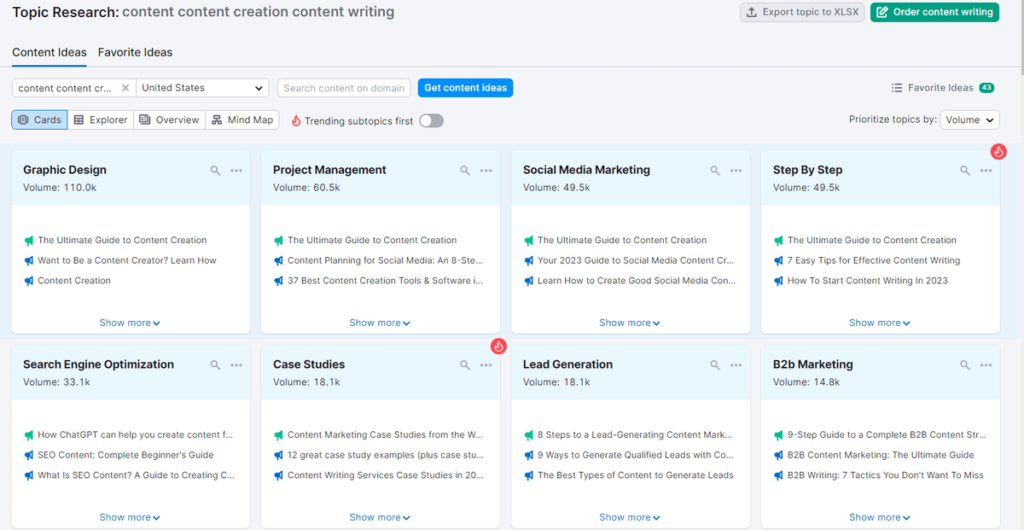
- Assess the search volume, competition, and keyword difficulty score for all relevant keywords. You can also segregate keywords to form topic clusters.
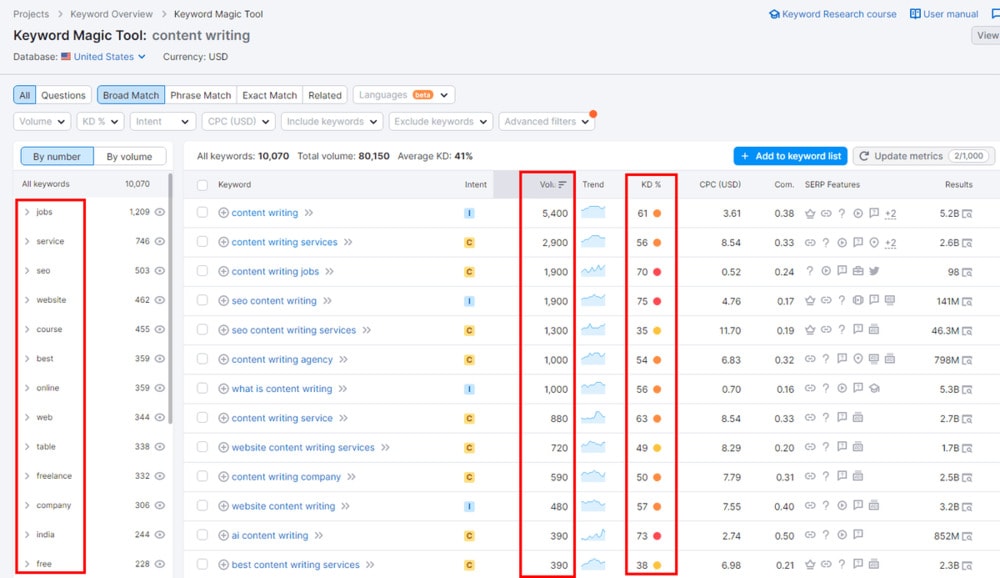
- Use Semrush’s Keyword Gap tool to find keywords that your competitors are ranking for but you are missing out on.
- Filter keywords with a comparatively lower keyword difficulty because they will be easier to rank for. However, the search volume mustn’t be too low.
I’ve also created another detailed guide on how to do keyword research. You may want to check it out to learn about this process in detail.
Create Content That Adds Value to Your Audience’s Lives
Consumers don’t want another article that contains the same information as ten other posts. You need to create value-added content that they would like to read and share.
I recommend that you follow these tips to create high-quality content:
- Understand the intent of your target keyword. What information does the searcher want?
- Research the topic well, leverage data, and share actionable tips from your expertise and experiences to create engaging and memorable content.
- Give practical advice that your audience can implement right away.
- Share tools that can help and show how to use them effectively. For this, you can create screenshots and screen recordings of you doing it.
- Include quotes from subject matter experts.
- Leverage different content formats to engage different user segments.
- Make your content easily readable and accessible.
Incorporate Multimedia Elements
Multimedia elements can help boost engagement, encourage shares, and improve your online presence.
Here are a few multimedia elements you can add to your website and content:
- Graphics
- Polls
- Quizzes
- Infographics
- Screenshots
- Screen recordings
- Explainer videos
- Animation
4. Build a Strong Social Media Presence
Using social media can help improve your digital presence and social signals can also be good for your SEO.
Identify the Social Media Platforms You Should Target
Don’t try to build your presence on too many social platforms. It’s best to pick 2-3 relevant ones that your audience frequents.
For example, if you run a B2B business, you may want to build a strong presence on LinkedIn. On the other hand, B2C brands can easily reach their audiences through Instagram and TikTok.
Social Media Platforms You Can Consider
Platform | YouTube | TikTok | |||||
Number of users | 2.5 billion users | 900 million members | 2.96 billion monthly active users | 2 billion users | 1 billion users | 556 million monthly active users | 450 million monthly active users |
Best For | Educational videos, Video marketing, Product reviews, Short-form, vertical videos with YouTube Shorts | B2B brand growth, Building professional connections | Building relationships , Improving brand loyalty | Selling products , Engaging your audience, Influencer marketing , Building relationships | Influencer marketing , Targeting a younger audience , Fun and entertaining content | Industry news , Memes Starting conversations | Lead generation , Increase engagement, Primarily for art, clothing, and food businesses |
Downside | Resource-intensive and time-consuming | Professional audience only | Limited organic reach | Lots of content formats to capitalize | Videos only Majorly, younger | 280 characters or less | Majorly, images-heavy content |
Create a Social Media Content Calendar
Managing multiple social media accounts can be challenging and time consuming. You may struggle to find new content ideas and create content that engages your audience.
That’s why I recommend creating a social media content calendar in advance to post consistently without fail.
What to include in your social media content calendar:
- Social media accounts
- The date and time when each post will be published
- Your post copy including captions, hashtags, and mentions
- Media including images, videos, or GIFs
Sounds like too much work?
You can reduce the number of posts you want to do each week, depending on your team’s bandwidth. I suggest batch-creating content.
You can plan your social media content on Google Sheets, ClickUp, or use a social media content planner like Later.
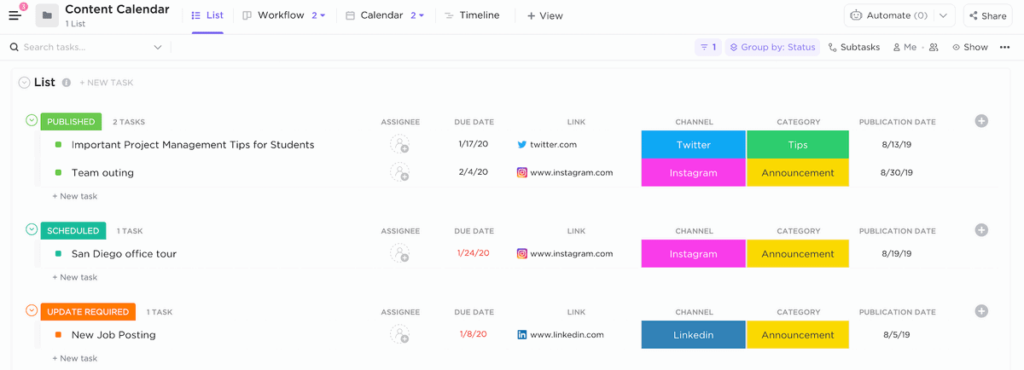
Engage with Your Audience
Don’t just post content and then forget about it. Take time to engage with your audience, respond to their comments, and interact with other accounts in your niche.
Here are some social media engagement tips that can help:
- Respond to users’ comments on your posts and Reels.
- Respond to DMs.
- Go Live to interact with your audience. You can introduce a new product to them or educate them about something relevant to your niche.
- Use Questions Stickers on your Instagram Stories to start conversations and encourage interactions.

- Start a poll on your Stories to engage with your audience.

- Host a giveaway contest to receive participation from your target consumers.
- Launch hashtag campaigns to create user-generated content (UGC) and feature the best ones on your official accounts.
Monitor Your Social Media Growth and Engagement
Monitoring your social media growth and engagement is important for understanding how well your social media strategy is performing.
Some of the key metrics you should track related to your social media performance are:
- Your follower growth rate
- Engagement rate
- Post views and impressions
- Post reach
- Number of saves
- Top-performing posts and Stories
- Story reactions and replies
- Click-through rate
- The amount of web traffic driven through social media platforms
By tracking these metrics, you can see how well your content is resonating with your followers and make changes to improve your social media presence.
To track this data, you can use the analytics features of social networks or third-party social media tools like:
5. Leverage Paid Advertising to Expand Your Audience
Leveraging paid advertising can be an effective way to reach new customers and enhance the online presence of your business.
You can place ads on popular websites, social media platforms, and search engines. Most paid advertising platforms allow you to target specific demographics, interests, and behaviors. They also provide measurable yet quick results.
Let me walk you through some of the most popular paid ad options.
Search Ads
Investing in search ads can help you land at the top of the SERPs and reach your target audience at the right time.
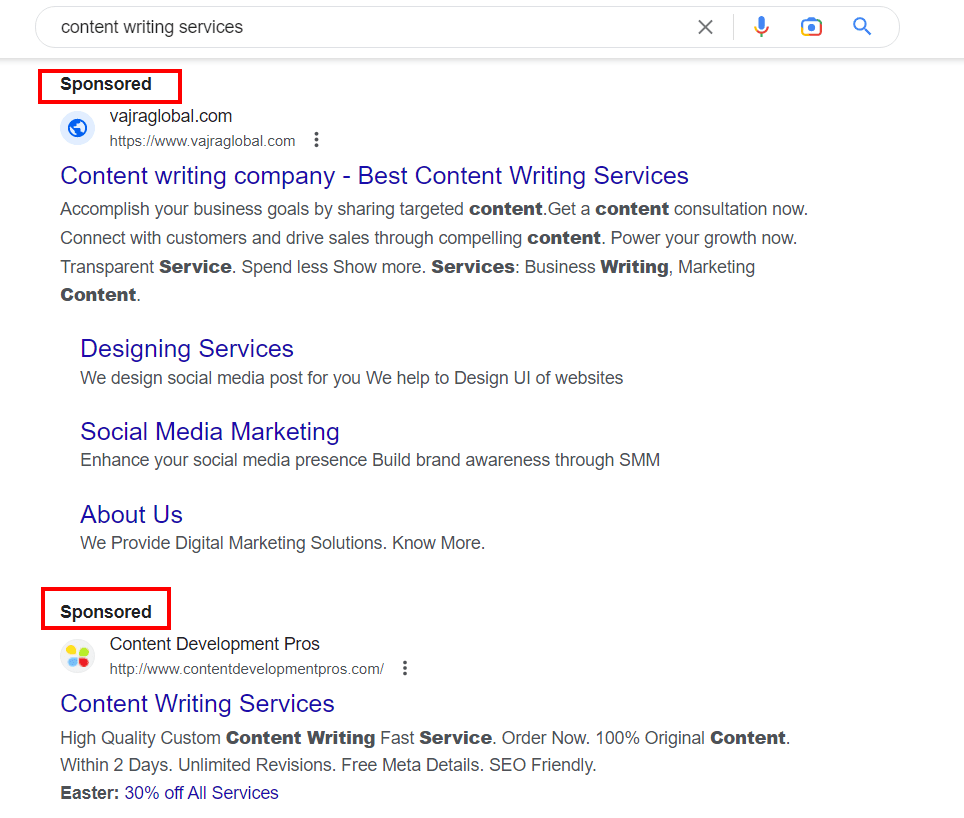
With search ads, you get measurable results, allowing you to track the performance of your campaigns and make data-driven decisions.
The best part is that you only pay when someone clicks on your ad. This makes it a cost-effective way to reach leads with the intent to buy your product or service.
Social Ads
Social media ads have higher reach and engagement rates than organic posts. But social media users often have less intent to buy when compared to searchers.
You can run ads on various social platforms, including Facebook, YouTube, Instagram, LinkedIn, Snapchat, and TikTok. You can even run Facebook Messenger ads.
An additional advantage of using social ads is that you can create engaging video ads to attract customers.
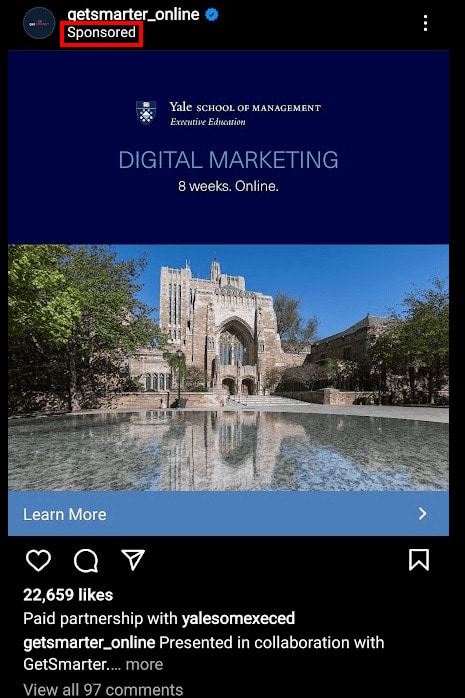
Display Ads
Display ads are the advertisements you see on websites, apps, and social media platforms. When you run display ads, they will be shown to custom audiences based on their interests, recent searches, and behaviors, and the websites they’ve visited.
Many websites allow publishers to run display ads within their body content or in their sidebar. Here’s one example from my own website:
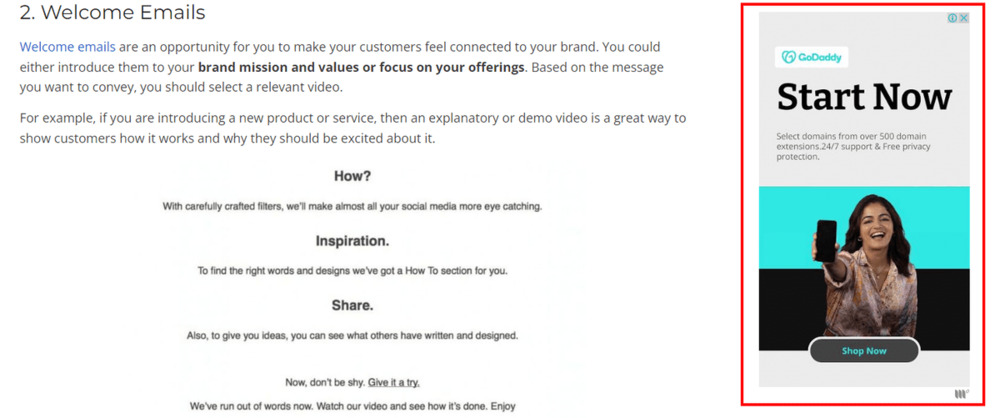
There are different types of display ads, including:
- Banners
- Images
- Videos
- Rich media
They can help you increase your online visibility instantly.
Retargeting Ads
While all of the above types of ads were about attracting new audiences, retargeting ads help you re-engage users. It targets people who have visited your website or shown interest in your product. They could have also previously interacted with one of your paid ads.
These ads help you mark your presence in your prospect’s mind even after they leave your website.
Google Local Service Ads
Google’s local service ads help you connect with people who search for services you offer and are from your neighborhood.
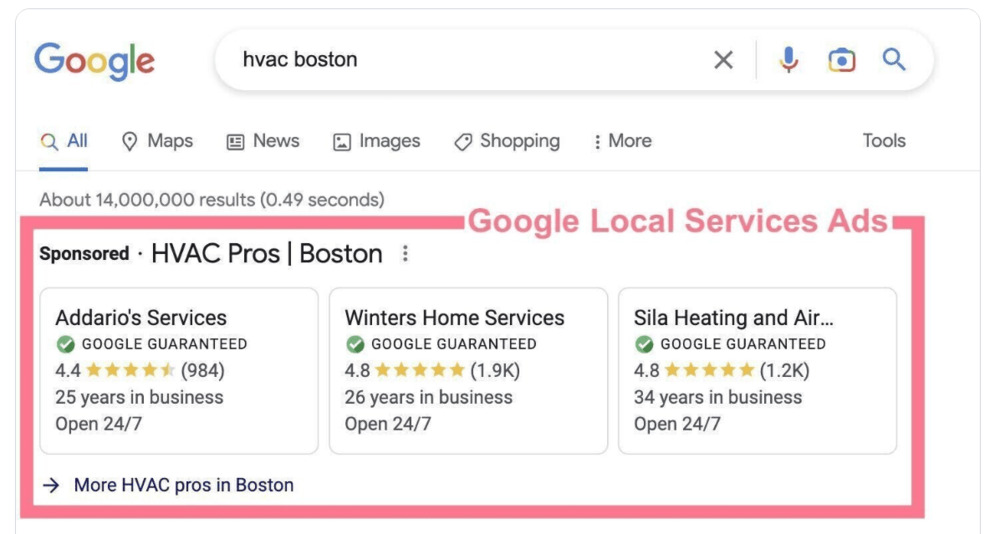
If you apply for local service ads, Google will show a “Google Guaranteed” badge under your business name.
Currently, these local service ads are available in certain areas and for certain service providers only. These include the United States, United Kingdom, Austria, Canada, Germany, Italy, and a few more.
6. Gain Visibility As a Local Business
The best way to attract customers from your neighborhood is to invest in local SEO.
Before I tell you how to do it, I’d like to share a case study of a family-owned bakery. They used Semrush’s digital marketing tools to rank #1 on Google and sell over 1 million macarons!
Isn’t that huge?
You just need to follow simple steps to generate similar traction to your local store.
Keep Accurate & Consistent NAP Data
NAP refers to the name, address, and phone number of your business. You should keep this data consistent across all business listings, local directories, your website, and social media accounts.
Optimize Your Google Business Profile
Formerly known as Google My Business (GMB) listing, your Google Business Profile is a significant listing. It helps you show up in the local search results when people look for “florists near me” or “florists in [your location].”
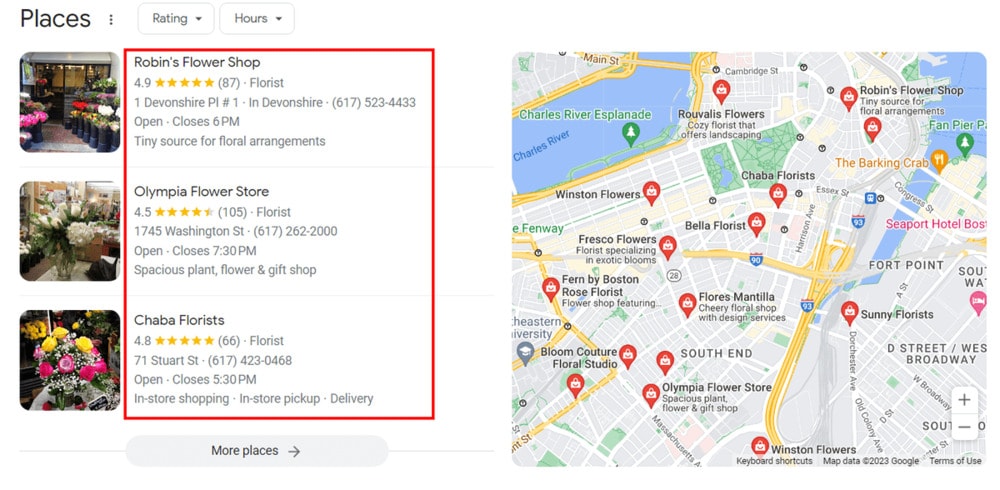
You should fill out all details carefully, including:
- Your business name
- Address
- Contact number
- Operational/working hours
- Types of services you offer (For example, “Dine in” and “Takeaway” for restaurants)
- Photos and videos of your store, products, etc.
Include important keywords related to your business.
Ask your customers to give you a review and rating on Google. It will be displayed alongside your business listing and act as social proof.
Create and Optimize Your Local Business Listings
Other than Google Business listing, list your business in local directories such as:
- Yelp
- Apple Maps
- Bing Places for Business
- LinkedIn Company Directory
- InsiderPages
7. Regularly Monitor and Manage Your Online Reputation
Regularly monitor the performance of your content and social media strategies to see how your efforts are resonating with your audience. Use consumer feedback and data to refine your approach and make data-driven decisions to build a stronger presence online.
- Respond to customer feedback and reviews.
- Share positive reviews and stories from your satisfied customers on social media and on your website to showcase social proof.
- Manage negative comments and reviews by politely addressing the user’s concerns. Give your best shot at solving their issues and turning them into happy customers.
- Answer online inquiries and messages at the earliest. You can consider deploying a chatbot on your website to answer repetitive and frequently asked questions.
- Provide 24/7 support to your customers and prospects.
- Include answers to frequently asked questions on your blog and in your help center.
Are You Ready to Improve the Online Presence of Your Business?
Improving your digital presence is crucial for attracting and retaining customers in today’s digital age.
To do this, you should follow the steps outlined in this post, such as:
- Auditing your online presence
- Understanding your audience’s needs and interests
- Optimizing your website for search engines and users
- Engaging your audience on social media
- Creating valuable content
- Leveraging paid advertising on search engines, social media, and other websites
- Improving local SEO
This will help you establish a strong and effective digital presence that can make it easier for you to achieve your business goals. However, remember to regularly monitor and refine your approach to ensure that you’re always providing the best possible experience for your audience.
Get started now!

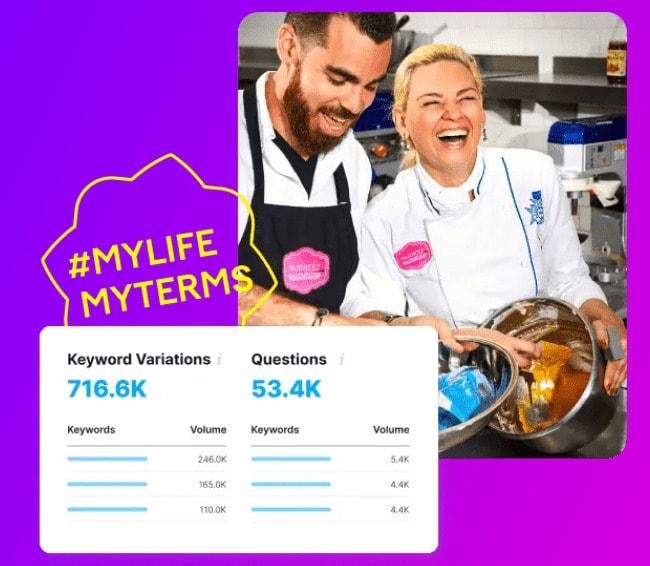

Related Articles
What is Digital Marketing? Everything You Need to Know
Best Blogger Outreach Tool – 21 Tools to Minimize Your Outreach Efforts
33 Free Google Marketing Tools for Marketers and Developers
22 Best Online PR Tools to Build and Monitor Media Relations
Digital Marketing for Startups: The Strategies to Use in 2024